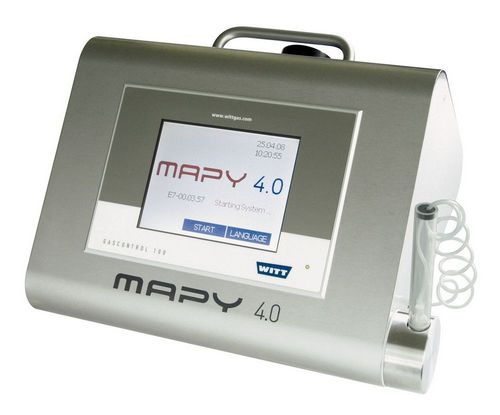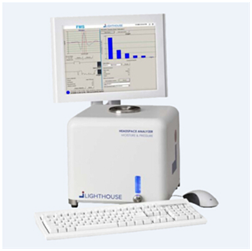Drug vacuum test method
Vacuum test method Destructive testing methods and non-destructive testing methods are common in vacuum testing. Destructive test method Zui is common to use a needle to puncture the top space of the container, and the vacuum is obtained by the pressure (vacuum degree) sensor. The test method is affected to some extent by the air in the pipeline and can be used for the vacuum degree. A rough spot check is particularly evident in small headspace containers. Typical applications are used for coarse closed vessel for integrity testing (CCIT are) evaluation, the vial is a high vacuum (evacuated to approximately 0.1 mbar) to a left half of the sample, and then observing degree of vacuum bottle. If there is a certain degree of vacuum inside, that is, the pressure inside is a slight negative pressure, indicating that the bottle is not leaking; on the contrary, if the pressure inside is normal pressure, the bottle is leaky. If it is used for process optimization and standard formulation, a non-destructive vacuum test method is usually used. The non-destructive vacuum test method is commonly used in the laser method (ie, frequency modulation spectroscopy ( FMS )). Its basic principle is that O2 , water vapor, and CO2 in the air will have laser absorption at a certain wavelength band, and the absorption spectrum will be obtained. , the amount of laser light absorbed (or amplitude is the peak height in the figures) and proportional to the concentration of the substance, wherein the laser absorption spectrum of water vapor in the width (the lateral distance between the crests and valleys) is proportional to the total pressure and the headspace. Therefore, the laser can be used to perform a non-destructive vacuum test on the container. The small detection limit of the laser method for the degree of vacuum is about 7 mbar , so it can be tested that the zui is close to the true vacuum. Vacuum test equipment MAPY 4.0 vacuum tester FMS- vacuum tester The FMS- Pressure Analyzer (Vacuum Tester) is a non-destructive gas analyzer for monitoring the degree of vacuum in a closed injection container. This compact analyzer uses patented laser absorption technology developed by the US Food and Drug Administration. The width of the near infrared laser absorption signal is related to the degree of vacuum. This assay provides a fast and comprehensive analysis of the product. The system can be mounted on a trolley, rolled between different filling lines for on-line process monitoring and troubleshooting activities, or the system can be permanently placed in the laboratory for product development, factory testing and quality control. survey. ? Vacuum leak detection FMS- vacuum tester technical parameters determination range 0 to 1.0 atm Regulatory policy 2010 version of the drug GMP guidelines on vacuum testing and container containment integrity testing Article 78 of the 2010 version of the GMP Guide for Drugs clearly states that the sealed container should be inspected for vacuum. Article 77 mentions that the tightness of the aseptic container should be verified to avoid contamination of the product. Food Additive Edible Corn Starch Additive Edible Corn Starch,Safe Cornstarch,Raw Eating Cornstarch,Good Quality Cornstarch Edible JILIN COFCO BIO-CHEM AND BIO-ENERGY MARKETING CO., LTD , https://www.cofco-biotech.com


The FMS- vacuum tester application includes:
? Container containment integrity study
? Freeze dryer verification, freeze-drying cycle optimization
? Stability and shelf life studies
Measurement time 5 seconds Container size 1 to 2000 mL
Container compatibility tubular or molded article; amber or transparent color controller---PC
It can be seen that the vacuum test is not equivalent to the container tightness test. The reason why the vacuum degree and the container tightness are tested separately, I understand as follows:
1 ) The vacuum test is to ensure the accuracy of the vacuuming process and to focus on the purpose of process control. Because once the process changes, it may affect the stability of the product, and may not meet the requirements of sterility.
2 ) The container tightness test focuses more on the control of the results, that is, whether the finished container of the sterile preparation leaks. Once the container leaks, it affects the shelf life of the product and does not guarantee sterility.
The vacuum degree of the container is changed, and the container is not necessarily leaked. For example, the leakage of the vial before the capping after the rubber stopper is applied may cause the degree of vacuum to change, and the zui may be tightly sealed after the final rolling, that is, it is not leaky.
On the contrary, the container leaks, and the degree of vacuum must change. Because the container leaks, air can enter the container, causing a change in the vacuum, residual oxygen, and moisture of the container, such as the headspace of the vial.
Therefore, if the vacuum is simply checked without performing the container tightness integrity test, the sealing of the Zui final product container will not be guaranteed. However, if the container tightness integrity test is carried out without vacuum degree detection, the accuracy of the process cannot be guaranteed (ie, the clean air may invade during the process, and the air contains moisture and oxygen, which may affect the stability of the product. Sex).